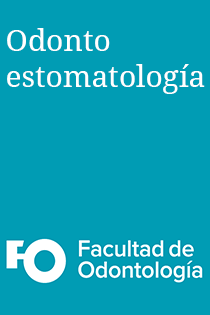Abstract
There is a growing interest in the performance of crowns and fixed partial dentures based in all ceramic structures, supported by tooth or dental implants. In addition to this, there have been multiple attempts to use all ceramic FPD (fi xed partial dentures), although most of them have not achieved the expected results. From this and the aspirations of looking for a material which can combine adecuate characteristics of mechanical, aesthetic and biocompatibility properties, zirconia comes as a new material with dental applications. New technological tools are available by which clinicians can achieve more satisfactory results. The use of zirconia and CAD CAM technology in fixed partial dentures must be based on a correct diagnosis and case selection. What is more, the proper validation of: teeth preparation, impressions, framework check and cementation are essential to the fi nal success of the restoration. The purpose of this article is to describe the clinical and lab stages which involves making a zirconia fixed partial denture, by describing a clinical report.
References
Oliva J, Oliva X, Oliva JD. Five-year Success Rate of 831 Consecutively Placed Zirconia Dental Implants in Humans: A Comparison of Th ree Different Rough Surfaces. Int J Oral Maxillofac Implants. 2010 MarApr;25(2):336-44
Crisp R, Cowan A, Lamb O, Tulloch N, Burke F, A clinical evaluation of all-ceramic Bridges placed in UK general dental practices: first-year results, Br Dent J. 2008 Nov 8; 205(9): 447-82
Molin M, Karlsson L. Five-year clinical prospective evaluation of zirconia-based denzir 3-unit FDPs, Int J Prosthodont. 2008 May-Jun; 21 (2): 223-7
Gonzalo E, Suárez M, Serrano B, Lozano J. Marginal fit of zirconia posterior fi xed partial dentures. The International Journal Of Prosthodontic 2008, 21 (5): 398-340
Edelhoff D, Beuer F, Weber V, Johnen C. Hip zirconia fixed partial dentures- clinical results after 3 years of clinical service. Quintessence Int. 2008 Jun; 39 (6): 459-471
Reich S, Kappe K, Teschner H, Schmitt J. Clinical fit of four-unit zirconia posterior fixed dental prostheses. Eur J Oral Sci. 2008 Dec; 116 (6): 79-84
Kohorst P, Brinkmann H, Li J. Marginal accuracy of four-unit zirconia fixed dental prostheses fabricated using diff erent computer-aided design/computer-aided manufacturing systems. Eur J Oral Sci. 2009 Jun; 117(3): 319-325
Komine F, Blatz MB, Matsumura H. Current status of zirconia-based fixed restoratios. J Oral Sci. 2010; 52 (4): 531-9
Gonzalo E, Suarez MJ, Serrano B. A comparison of the marginal vertical discrepancies of zirconium and metal ceramic posterior fi xed dental prostheses before and after cementation. J Prosthetic Dent 2009, 102: 378-384
Siegward D, Heintze DDS. Survival of zirconia and metal-supported fixed dental prostheses: a systematic review. Int J Prosthodont. 2010 Nov-Dec;23(6):493-502
Beuer F, Edelhoff D, Gernet W. Th ree-year prospective evaluation of zirconia-based posterior fixed dental prostheses. Clin Oral Investig 2009, 13(4): 445-451
Tinschchert J, Schulze KA, Natt G. Clinical behaviour of zirconia-based fixed partial dentures made of DC-Zirkon: 3 year results. Int J Prosthodont 2008;21(3):217-222
Molin MK, Karlsonn SL. Five year clinical prospective evaluation of zirconia-based Denzir 3-unit FPDs. Int J Prosthodont 2008, 21: 223-227
Schmitter M, Mussotter K, Rammelsberg. Clinical performance of extended zirconia frameworks for fixed dental prostheses: twoyear result. J Oral Rehabil 2009, 36: 610-615
Cehreli MC, Kokat AM. CAD CAM zirconia vs slip cast glass infi ltrated alumina/zirconia all-ceramic crowns: 2-year results of a randomized controlled clinical trial. J Appl Oral Sci 2009, 17: 49-55
Schmitt J, Holst S, Reich S. Zirconia posterior fixed partial dentures: a prospective and clinical 3-year follow up. Int J Prosthodont 2009, 22: 597-563
Ortorp A, Kihl ML, Carlsson GE. A 3-year retrospective and clinical follow-up study of zirconia single crowns performed in a private practice. J Dent 2009, 37: 731-736
Att W, Komine F, Gerds T. Marginal adaptation of three different zirconium dioxide three-unit fixed dental prostheses. J Prosthet Dent 2009, 101: 239-247
Roediger M, Gersdorff N, Huels A. Prospective evaluation of zirconia posterior fi xed partial dentures: 4-year clinical results. Int J Prosthodont 2010, 23: 141-148
Beuer F, Schweiger J, Kappert HF. Highstrength CAD/CAM-fabricated veneering material sintered to zirconia copings- a new fabrication mode for all-ceramic restorations. Dent Mater 2009, 25: 121-128
Bilge Gökcen-Röhlig. Appplicability of zirconia dental prostheses for metal allergy patients. Int J Prosthodontic 2010, 23: 562-565
Rimondi L, Cerroni L, Carrassi A, Torricelli P. Bacterial colonization of zirconia ceramic surfaces: an in vitro and in vivo study. Int J Oral Maxillofac Implants 2002; 17: 793-798
Scarano A, Piattelli M, Caputi S. Bacterial adhesion on commercialy pure titanium and zirconium oxide disks: an in vivo human study. J Periodontol 2004, 75: 292-296
Scotti R, Kantorski KZ, Monaco C. SEM evaluation of in situ early bacterial colonization on a Y-TZP ceramic: a pilot study. Int J Prosthodontic 2007, 20: 419-422
Zarone S, Russo S, Sorrentino R. From porcelain-fused-to-metal to zirconia: clinical and experimental considerations. Dental Materials 2011, 27: 83-96
Tinschert J, Natt G, Mautsch w. Marginal fi t of alumina-and zirconia-based fi xed partial dentures produced by a CAD/CAM system. Operat Dent 2011, 26(4): 367-374

